The IELTS often deals with life sciences, especially in its Reading section. Expect to encounter a lot of life sciences vocabulary words on the exam. In this post, we’ll look at the most common IELTS science vocabulary words: those related to life sciences, the environment, and plants and animals.
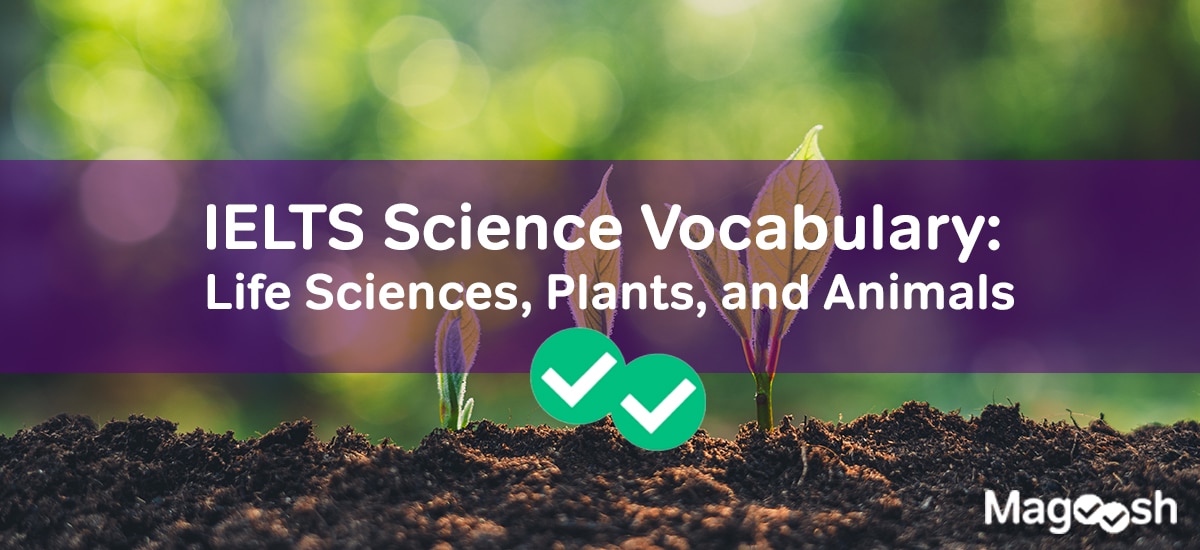
Because visuals are very useful for memorizing and learning IELTS science vocabulary, Magoosh is also proud to present cartoons to help you master IELTS words.
And for more science vocabulary practice, check out the video below!
Table of Contents
IELTS Science Vocabulary: Life Sciences and the Environment
Environment

You probably already have a general idea of what “environment” means. If you don’t, the title of this post may be a little confusing. To be clear, “environment” refers to all the physical parts of the natural world. By this, I mean the world that is not deliberately created by humans. The environment is the air we breathe, the water found in nature, and the land where wild animals and plants grow. In life sciences, the man-made parts of the world are studied carefully to see how they affect the environment.
Pollution

“Pollution” describes things from the human world that enter the environment and harm it. Pollution includes smoke from cars and factories, garbage that is dumped into the forests or oceans, oil spills, that sort of thing. Many different IELTS Reading passages will mention pollution, even if the articles don’t focus on life sciences.
Erosion
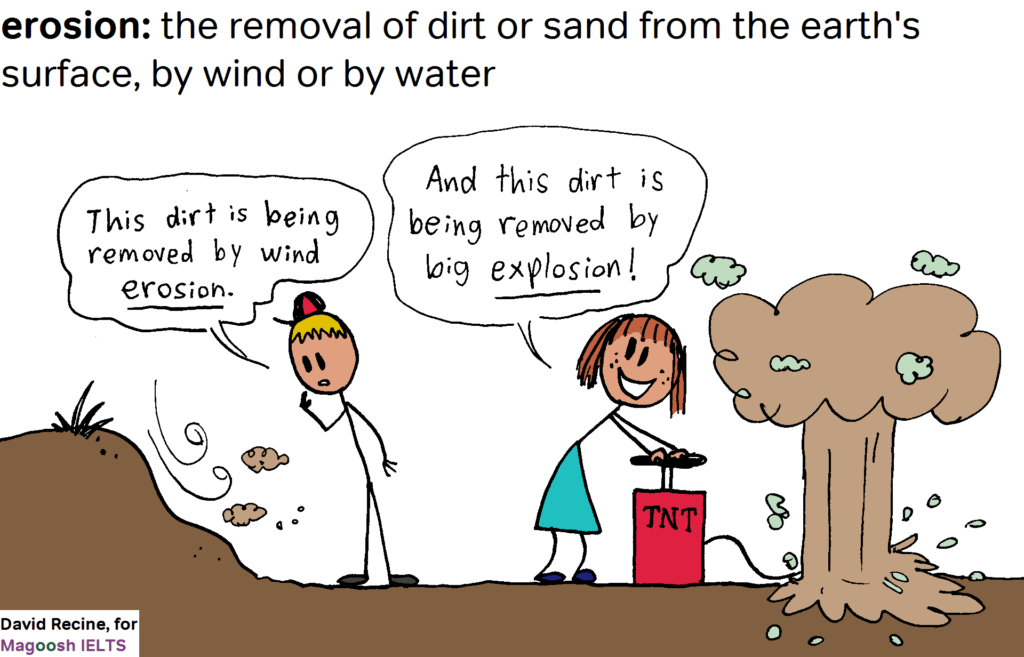
Sometimes dirt or sand gets removed from the surface of the earth by wind or water. This removal of dirt and sand is called “erosion.” Erosion can change the environment. If dirt washes or blows away, plants will die off, and the environment will change. Human activities can often cause erosion. Humans can also work to prevent erosion.
Habitat
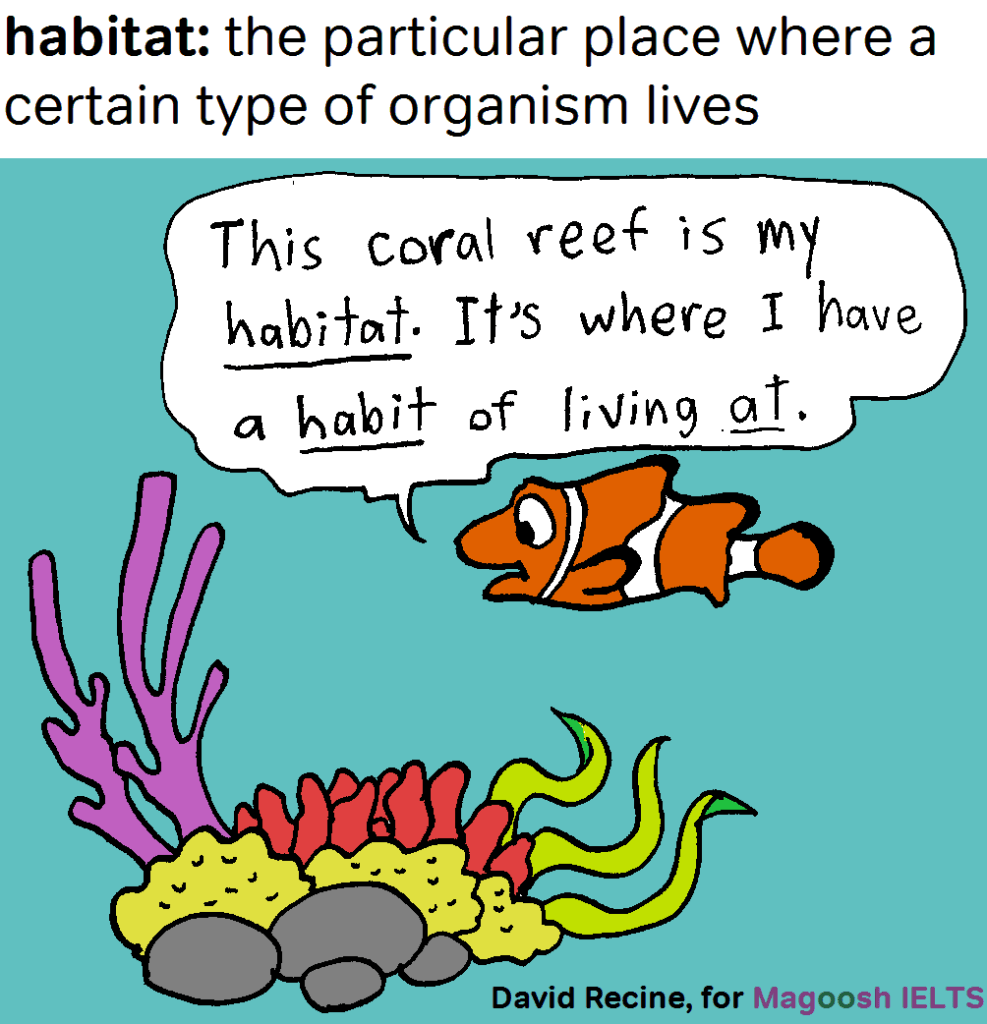
A habitat can be seen as a small part of the environment. Habitats are specific places where certain plants, animals, or other living things are found. A fish’s habitat is water. Some kinds of fish have a seawater habitat, while others have a fresh water habitat. Cacti live in dry desert habitats. Each living thing has its own special habitat. Life science texts on the IELTS look at the way that pollution can change or threaten habitats.
Agriculture
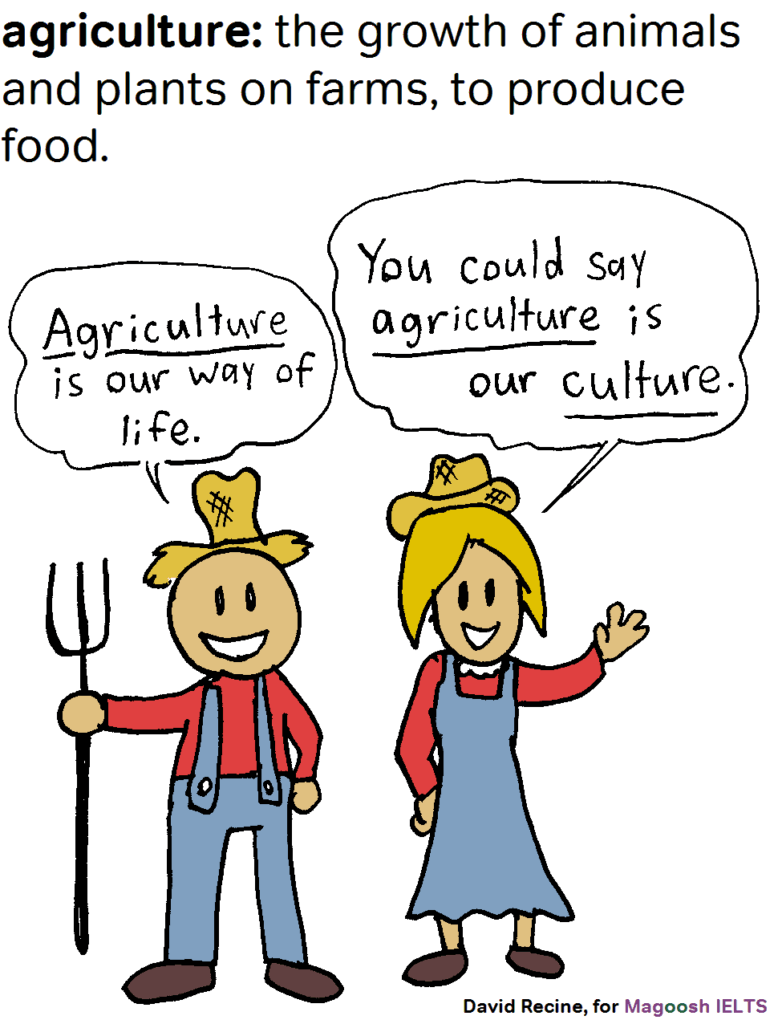
Agriculture is a formal academic word for “farming.” Agriculture describes the production of anything that can come from a farm: fruit, vegetables, meat, milk, and the like. On the IELTS, agriculture is nearly always discussed in terms of how it affects the environment.
Sustainable
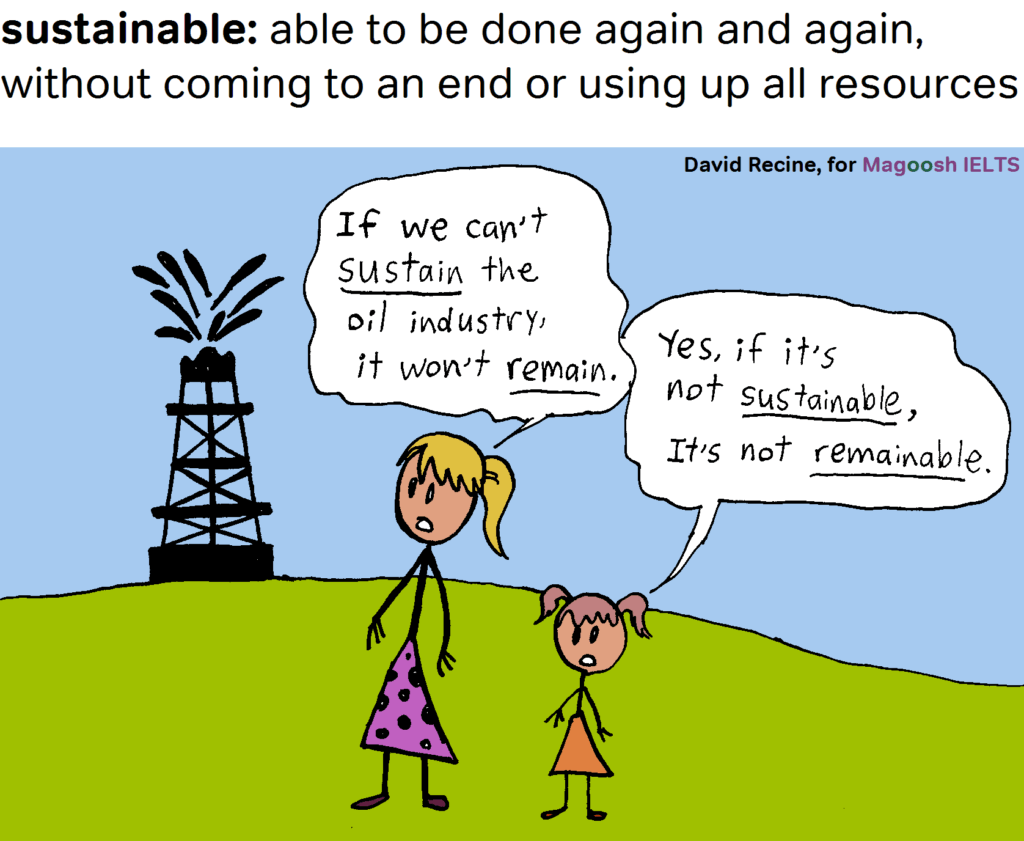
IELTS passages will talk about whether or not a human activity is “sustainable.” A sustainable activity is one that will not damage the environment, and will not use up all of a resource. The use of oil as fuel is criticized as unsustainable; eventually we will use up all the oil stored in the earth. Moreover, drilling for oil and burning oil for energy both hurt the environment.
Emissions
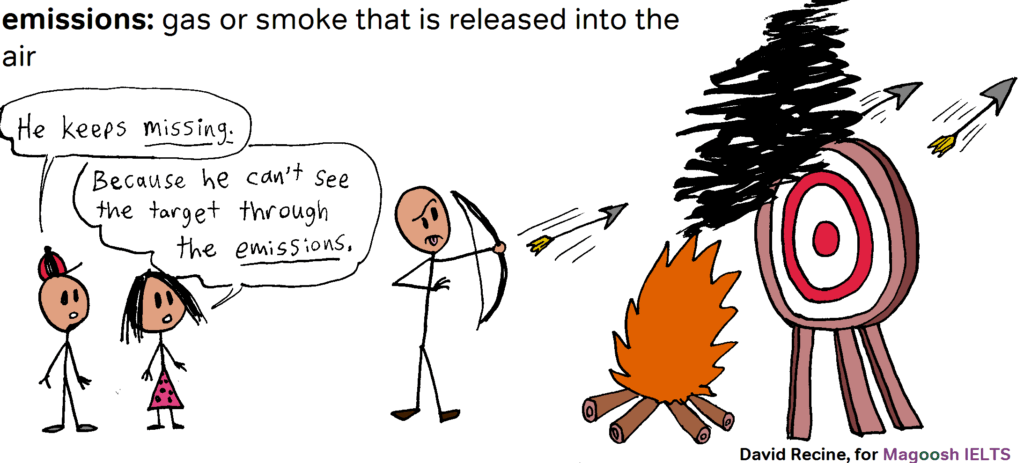
“Emissions” refers to any kind of gas, smoke, or air that is released into the environment. IELTS passages sometimes look at emissions created by human activity, such as smoke emissions from cars and trucks, or the emission of carbon dioxide (a gas that causes climate change).
IELTS Science Vocabulary: Plants and Animals
Flora and fauna
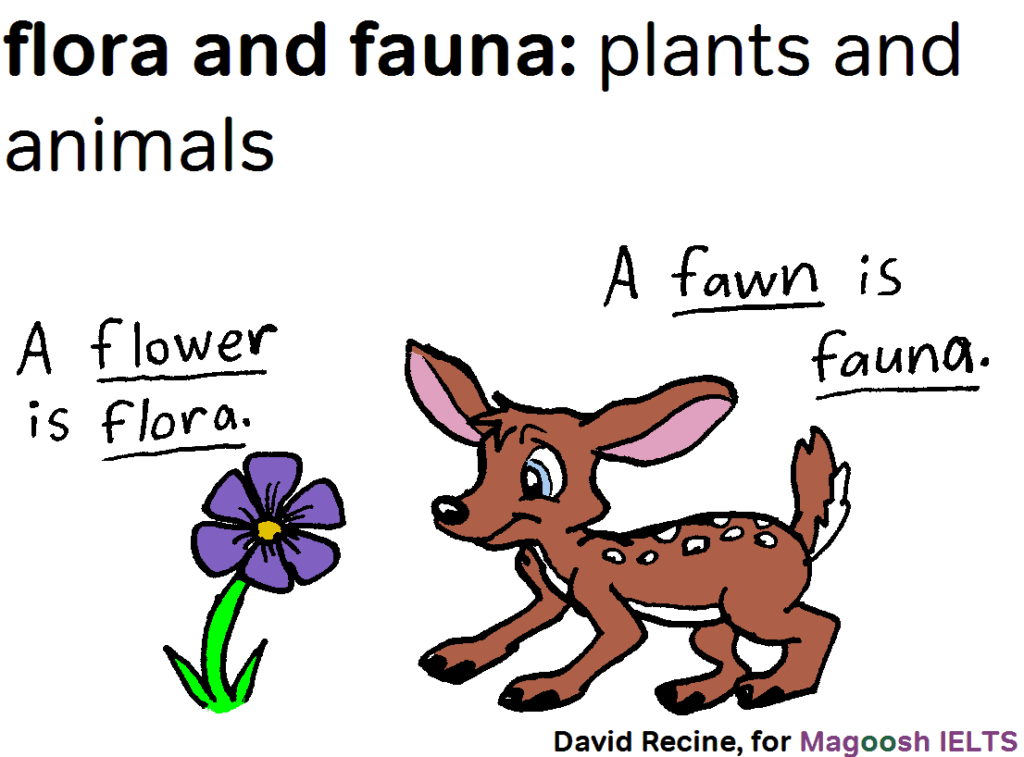
“Flora and fauna” means “plants and animals.” Flora referring to plants, and fauna refers to animals. Think of a flower and a fawn (a baby deer). These two IELTS science vocabulary words will always go together in the fixed phrase “flora and fauna.” The words are not truly English. Instead, these words are borrowed from Latin. This confuses many test-takers. Now that you know this phrase, you don’t have to be confused when you see it on the IELTS.
Mammal
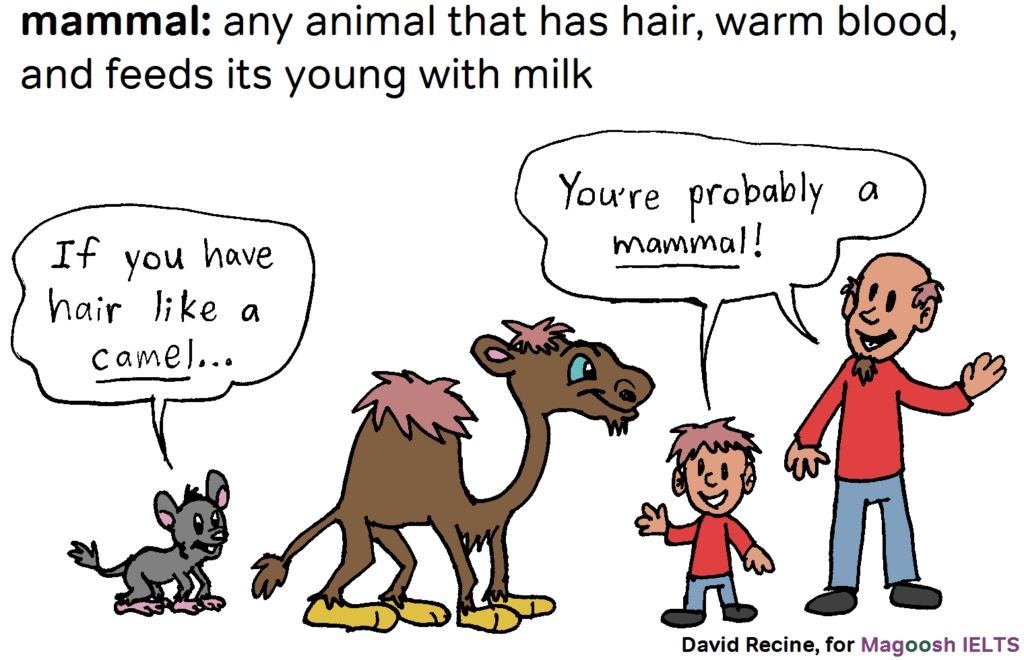
Mammals are animals that have fur (or hair) and have warm blood. Female mammals make milk that they feed to their babies. Mammals include dogs, cats, humans, etc. Most—but not all—mammals give live birth. There are a few egg-laying mammals in existence too.
Reptile
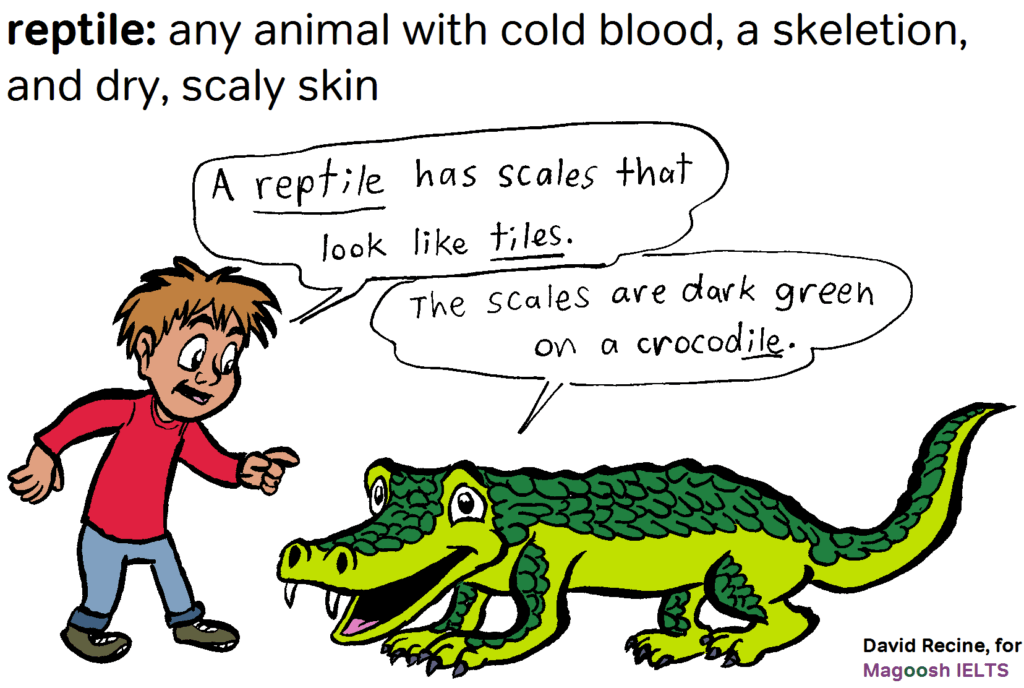
While mammals are warm-blooded (able to regulate their own body temperature), reptiles are cold-blooded. This means that the temperature of a reptile’s body is strongly influenced by the air temperature immediately outside of the reptile’s body. The reptile group of animals also have scales and no hair or fur. Common reptiles include turtles, lizards, and snakes.
Species
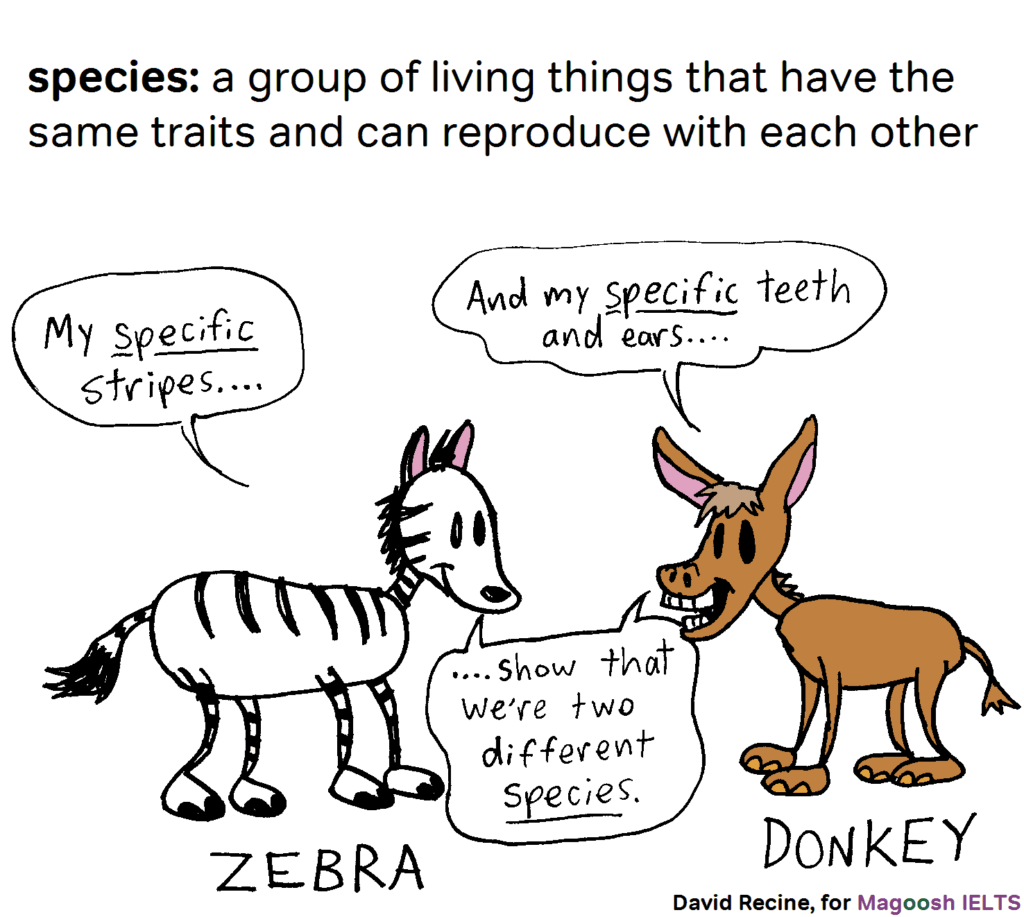
A species is a very specific type of living thing. Mammals and reptiles are not in the same species because these are large categories of very different animals. Dogs and turtles aren’t in the same species either because there is still a lot of variation between these types of animals. For a type of animal to qualify as a species, it must be able to mate with other animals of its kind and produce babies that are the same kind of animal. Humans are a species. Other examples are individual types of snakes or dogs, such as the timberwolf or the coral snake. There are plant species too, like the Giant Redwood tree, or the tiger lily.
Evolve
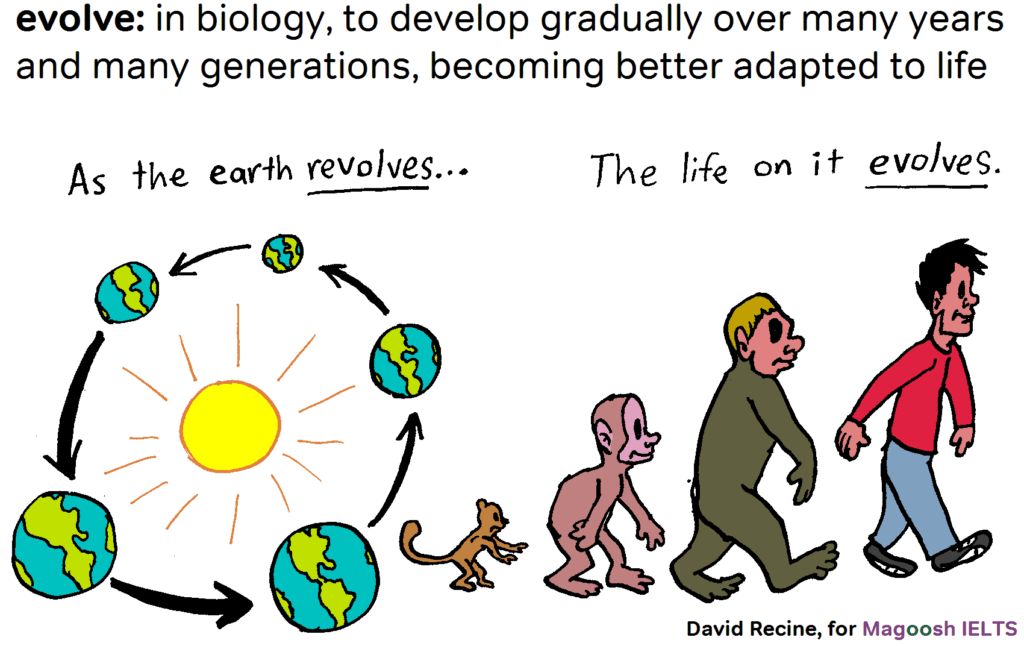
“Evolve” is a life science verb. To evolve is to change in some way in order to survive. Individual species of animals and plants evolve over long periods of time—millions of years. The way the human brain has slowly gotten bigger over thousands of generations is an example of a way that humans have evolved. With a larger brain comes higher intelligence and a better ability to survive.
Cell
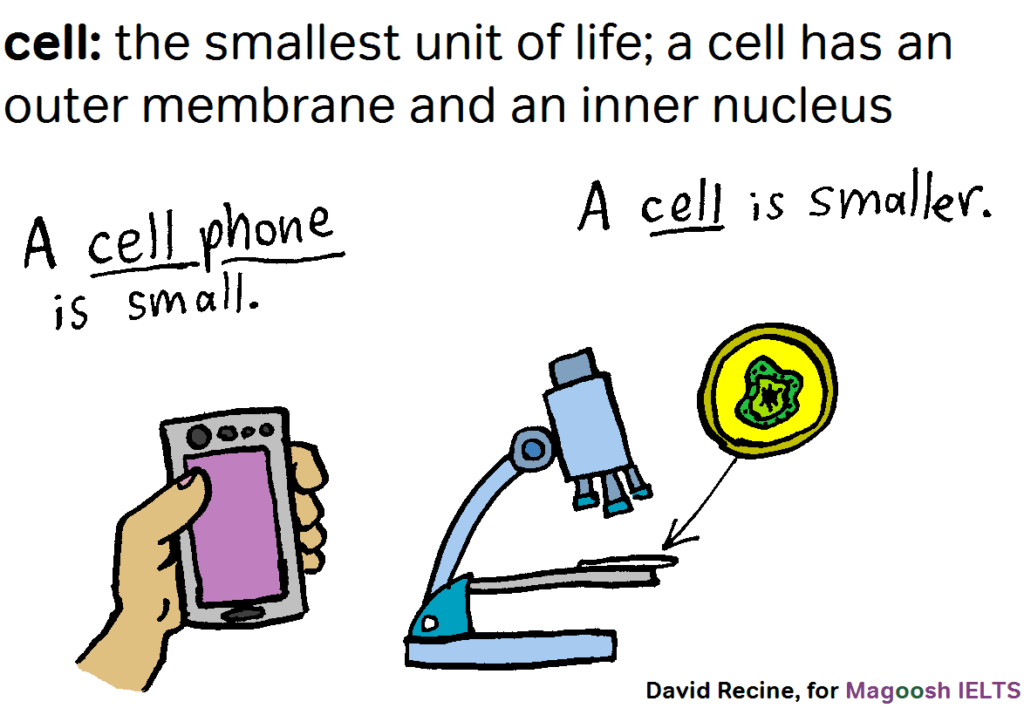
A cell is a tiny living thing, so small it can only be seen with a microscope. Every cell has a thin skin that protects it, called a membrane. The membrane can take in food for the cell. Each cell is controlled by a nucleus, a kind of tiny simple brain in the middle of a cell. Cells can be part of a larger living thing. Every part of an animal or plant’s body is made up of tiny cells. A cell can also be an independent living thing. An amoeba is an example of an organism (living thing) that has just one cell.
Soil
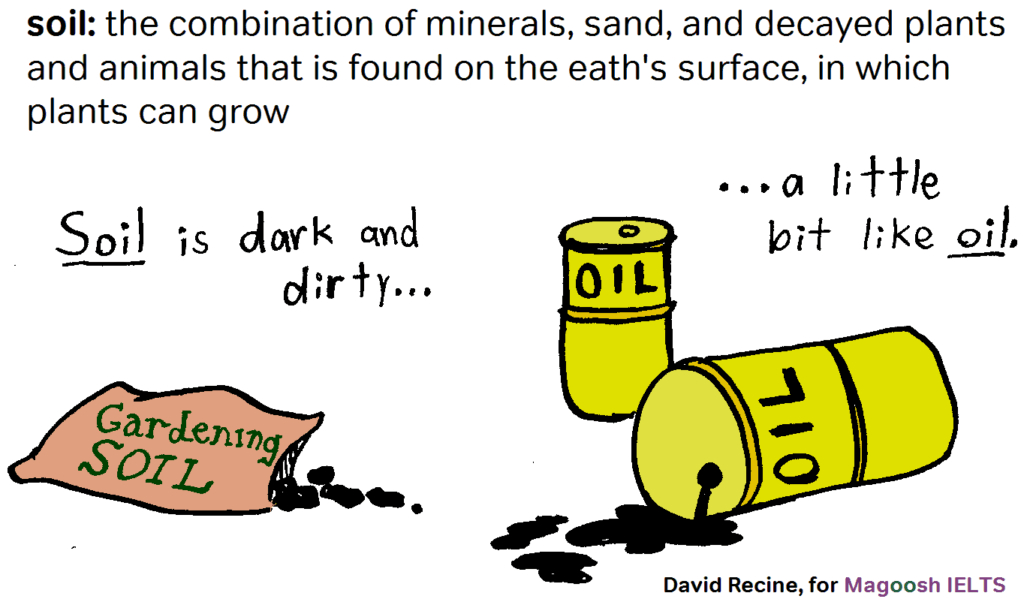
Soil is sometimes called “dirt” in informal English. Soil is the dark, dirty stuff under our feet that plants grow out of. Worms, rabbits, and other hole-digging animals stay in or under the soil.
Want more practice?
There are so many resources and places to go to find and practice new IELTS science vocabulary. Read books, watch movies, check out our Complete Guide to IELTS Vocabulary, and dedicate yourself to IELTS prep. Do these and you’ll feel more confident with your expanded vocabulary!






Leave a Reply